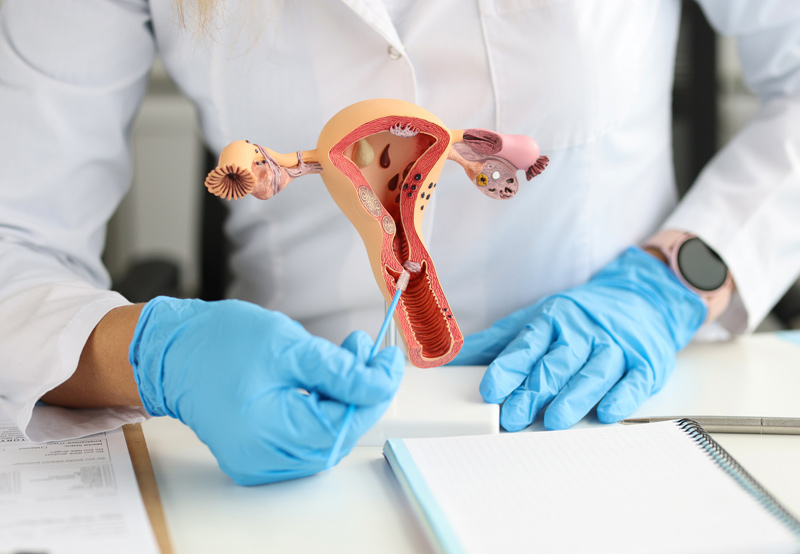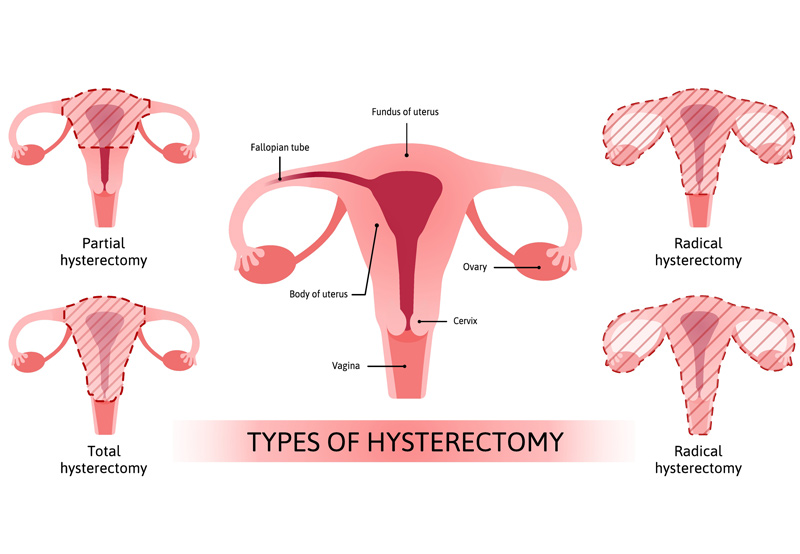

A hysterectomy is a surgical procedure done to remove a woman’s uterus, or womb. The patient’s fallopian tubes and ovaries may also be removed. After surgery, women are no longer able to become pregnant and won’t have any more menstrual periods.
Who Needs a Hysterectomy?
The procedure may be done for patients diagnosed with the following conditions:
- Uterine fibroids. These noncancerous growths are located in the wall of the uterus and may cause pain or heavy bleeding.
- Heavy or unusual vaginal bleeding. This may be caused by changes in hormone levels, cancer, fibroids, or infection.
- Uterine prolapse. Several vaginal births, menopause, and obesity can cause the uterus to slip from its usual place into the vagina and lead to urinary and bowel problems and pelvic pressure.
- Adenomyosis. Tissue lining the uterus grows inside the walls of the uterus causing the uterine walls to thicken and leading to heavy bleeding and severe pain.
- Endometriosis. Tissue lining the uterus grows on the ovaries and causes severe pain and bleeding between periods.
- Cancer of the ovary, cervix, uterus, or endometrium. Patients with any of these cancers may need to undergo hysterectomy.

Types of Hysterectomies
In a total hysterectomy (which is the most common type of hysterectomy), the entire uterus and cervix are removed. The ovaries and fallopian tubes may also be removed.
A partial, subtotal, or supracervical hysterectomy involves the removal of the upper part of the uterus. The cervix is left intact, but the ovaries may be removed.
In a radical hysterectomy, the patient’s uterus, cervix, tissue on both sides of the cervix, and the upper part of the vagina are removed. The fallopian tubes and ovaries may also be removed. This type of hysterectomy is often done to treat certain types of cancer, such as cervical cancer.
What to Expect During a Hysterectomy
An abdominal hysterectomy is done through a cut in the lower abdomen, whereas a vaginal hysterectomy is done through a small incision in the vagina.
During a laparoscopic hysterectomy, the surgeon inserts a laparoscope to help visualize the pelvic organs. This type of surgery is done through very small incisions in the abdomen or vagina that are used to insert the laparascope and surgical tools.
During robotic surgery, the physician guides a robotic arm to control the tools inserted through small cuts in the lower abdomen.
The Recovery Process
Patients typically stay one or two days in the hospital after surgery. A longer hospital stay may be necessary if the hysterectomy was done to treat cancer.
Patients will need to get up and move around as soon as possible after surgery to promote recovery. Abdominal surgery has a four- to six-week recovery period. Patients who have undergone vaginal, laparoscopic, or robotic surgery may need three to four weeks to recover.
After surgery, it’s important to:
- Get plenty of rest
- Avoid lifting heavy objects, hot baths, and sexual intercourse for four to six weeks after surgery
The exact recovery time will vary depending on the patient’s health before surgery and the type of procedure that was performed.
